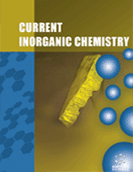Abstract
The chromic acid oxidation of formic acid in the presence and absence of bipyridine (bpy) as a catalyst have been studied in aqueous micellar media under the kinetic condition, [formic acid]T > > [Cr(VI)]T at various temperatures. The un catalyzed path is first order with respect to [H+], [formic acid]T and [Cr(VI)]T. The bpy catalyzed path gives also first order dependency on [H+]. This path also shows a first order dependence on [bpy]T. HCrO4 - has been found to be kinetically active in the absence of bpy while in the bpy catalyzed path, a Cr(VI)-bpy complex was considered to be the active oxidant. In this path the Cr(VI)-bpy complex undergoes a nucleophilic attack by the formic acid to form a ternary complex which subsequently experiences a redox decomposition involving 3e transfer leading to CO2 and corresponding Cr(IV)-bpy complex. In the un catalyzed path, the Cr(VI)-substrate ester undergoes acid-catalyzed redox decomposition through 3e-transfer as the rate-determining step. All these patterns remain unaltered in the presence of externally added surfactants. The effects of an anionic surfactant, sodium dodecyl sulphate (SDS), on both the un catalyzed and catalyzed paths were studied.
Keywords: Kinetics, Formic acid, chromium(VI), bipyridine, SDS, predominan, Kinetics Measurements, Stoichiometry, bipy
 13
13

